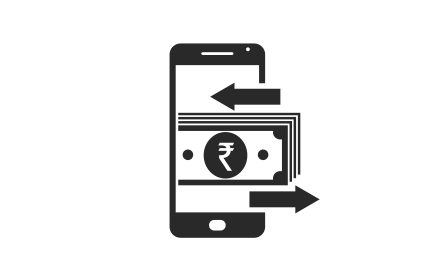If you have ever gone grocery shopping at a supermarket, then you must be quite familiar with a barcode. Not just supermarkets, you will probably find barcodes on almost every product that you buy from a mall as well. And now, QR codes have steadily emerged into prominence. This brings us to the question that is probably on your mind right now – what is the difference between QR code and barcode?
What is a barcode?
Let’s first begin by understanding what is a barcode? Barcodes are extremely commonplace. However, there have probably been multiple instances when you have seen a barcode but have failed to actually identify it properly. A lot of them do look different. A barcode is just a visual form of information that is easily readable by a computer.
If you look closely, you will see that a barcode is composed of a collection of black lines, arranged parallel to each other. Each line will vary in its width, but the length stays the same. The important thing to note here is that the barcode contains a pretty large amount of information. Manufacturer name, the article type, price of the item and lots more – all of this can be derived by the barcode scanner quite easily.
What is a QR code?
A QR code can be termed quite similar to barcode. However, it still does have multiple differences that help it to stand out on its own. If anything, you can say that the QR code is an evolved version of the bar codes. Just like a regular bar code, QR codes are also machine readable, and non-readable by us humans. But the QR codes are much more different in appearance, and that is where the paths of bar codes and QR codes diverge. A QR code is composed within a small box, and consists of black dots, which almost represent pixels. These dots vary in size, though.
Unlike barcodes, which need a specific type of scanner, QR codes can be scanned via smartphones. All you have to do is take out your phone, point the camera towards the code and the machine only information is immediately translated into a language that humans can understand. This entire process takes place within a few seconds. Hence, QR codes are much more easily accessible, and have made their way into multiple industries very quickly. Furthermore, almost anyone can make their own QR codes. These can contain vast amounts of information – significantly more than a regular bar code.
Nowadays, restaurants are using QR codes as their menu cards, which can just be scanned to see the menu. You will also find QR codes on the back of Wi-Fi routers, which can be scanned on your phone to connect to the Wi-Fi. You scan the QR code of a family member on a money transfer app if you wish to send them money. As you can see, the applications and potential of this technology is far greater than the bar code.
Bar code and QR code difference
Now, no mention of the difference between QR and barcode is complete without doing a side-by-side comparison between the two. Here are some of them:
|
Bar Code |
QR code |
| Bar code technology is considerably old, as it was developed in 1952. | On the other hand, QR codes are quite new. They were developed in 1994. |
| It was found by Norman Joseph Woodland. | QR codes were developed by Masahiro Hara. |
| Bar codes can be of two different types – 1 dimensional or 2 dimensional, depending on the needs of the product or item. | These can only be of one type. |
| These are a form of storing numbers, which are printed and stored in a format only understood via software. | QR codes are 2D forms of a barcode. It is a printed version of data, which can be easily scanned via smartphones. |
| Used mostly at stores, to track the items you have purchased, at hospitals for patient records, tracking airline luggage, nuclear waste and more. | Much more mainstream usage than barcodes. Used via UPI apps to make cashless payments, supermarkets, etc. |
| It has comparatively lesser storage space. | Greater space to store information. |
| Barcodes can only be scanned via a barcode scanner. | Can be scanned via smartphones very easily. |
| Much slower in processing information. | Information processing via QR codes is almost instant. |
| Information is stored here in a horizontal manner. | Stores information both horizontally and vertically. |
| Appears like a vertical arrangement of lines that are parallel to each other. | Arrangement of dots inside a square shaped grid. |
Get the Airtel Thanks app!
We hope this helped to clear out the QR code vs barcode differences for you. Thus, if you want to use an UPI app to make instant payments with a QR code, then we suggest downloading the Airtel Thanks app.
Airtel Thanks app is the one app you will ever need for all your recharges, utility bill payments, FASTag recharge, and more. Therefore, without wasting any more time, download the app from the Play Store or App Store today!



